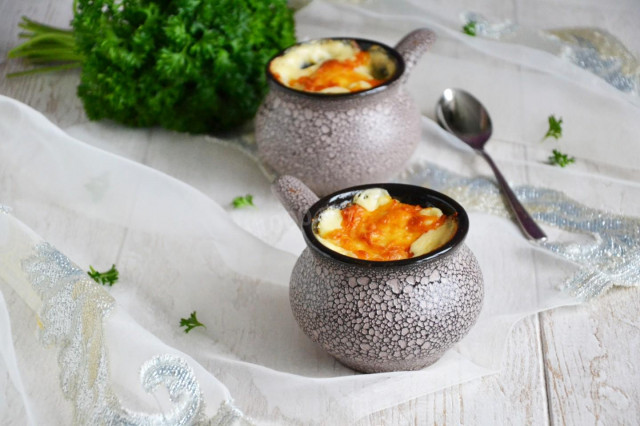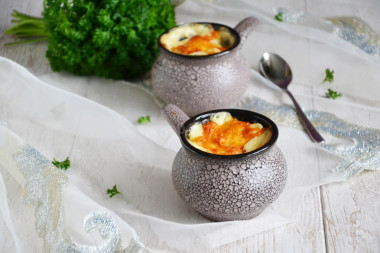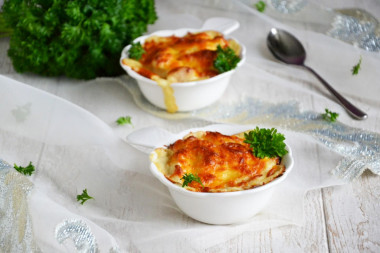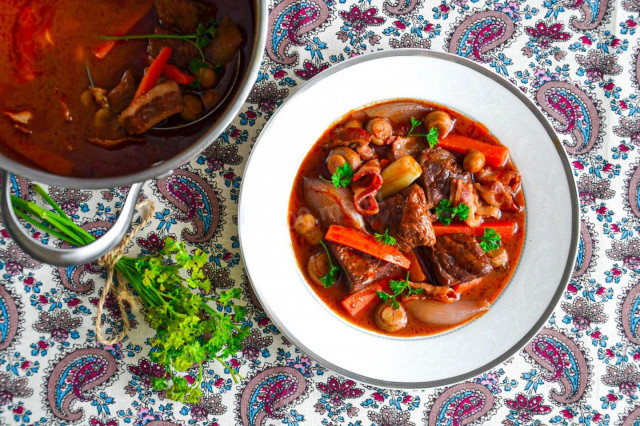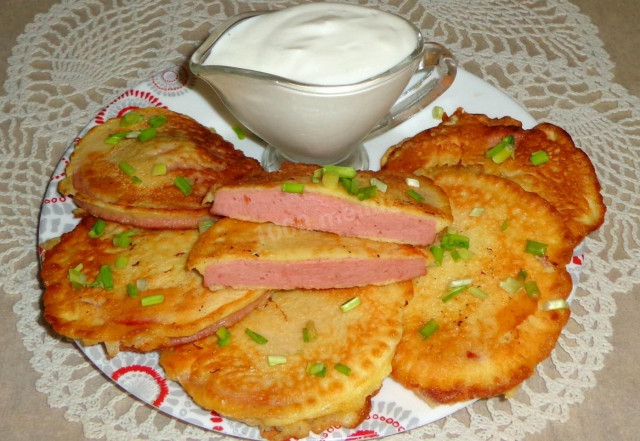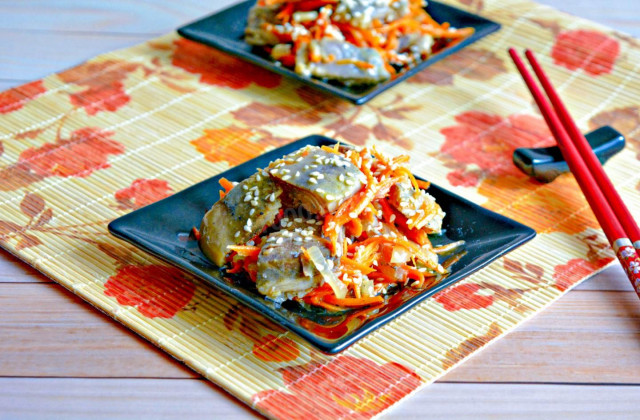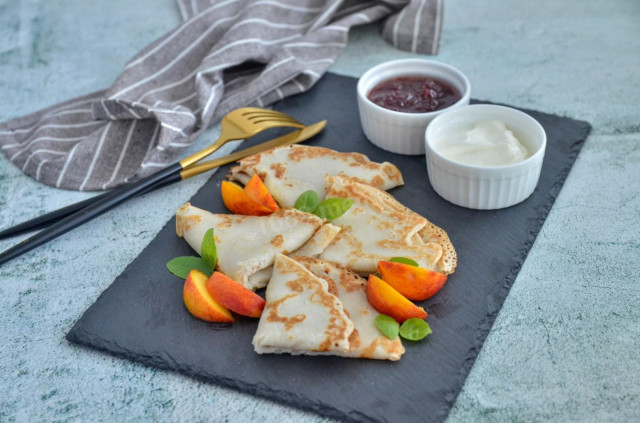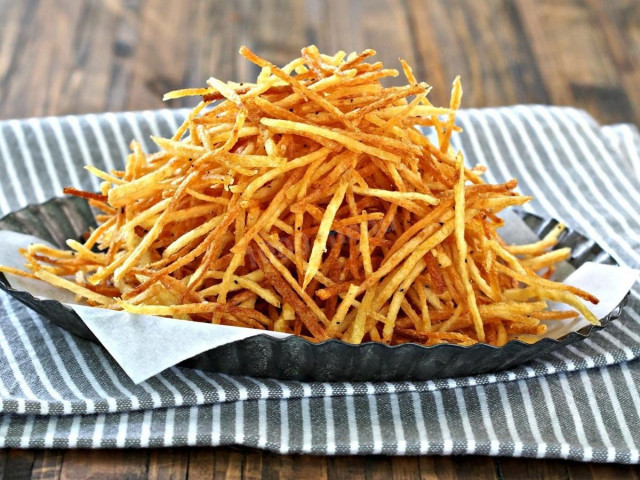Composition / ingredients
Step-by-step cooking
Step 1:
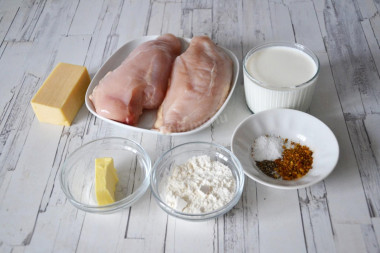
How to make julienne without mushrooms? Prepare the ingredients. To cook julienne without mushrooms, we will need: chicken fillet; cheese; cream; butter; flour; spices for chicken; ground black pepper and salt.
Step 2:
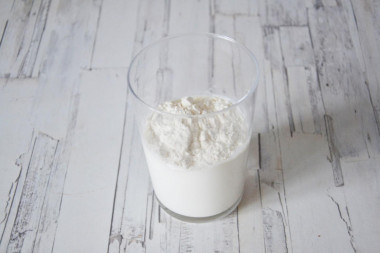
Pour flour into the cream and mix everything thoroughly so that there are no lumps.
Step 3:
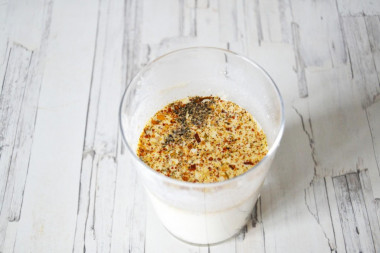
Add spices for chicken, salt and pepper to the creamy flour mixture. Mix it up.
Step 4:
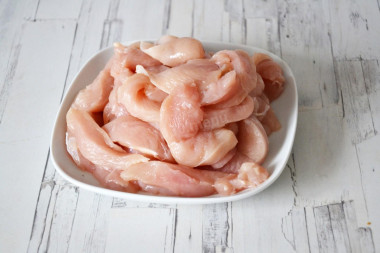
Wash the chicken fillet, dry it and cut it into cubes.
Step 5:
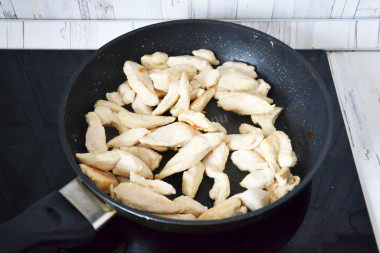
Melt the butter in a frying pan and fry, stirring, the chicken fillet over high heat for about 10 minutes until a golden crust appears on the meat.
Step 6:
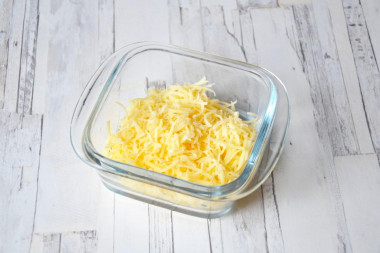
Grate the cheese on a coarse grater.
Step 7:
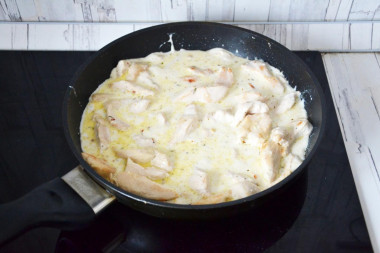
Pour the creamy flour mixture into the pan with the chicken. Stir and bring to a boil. Simmer over medium heat for about 2 minutes. The sauce should thicken. If the sauce turns out to be very thick, you can dilute it a little with milk or cream.
Step 8:
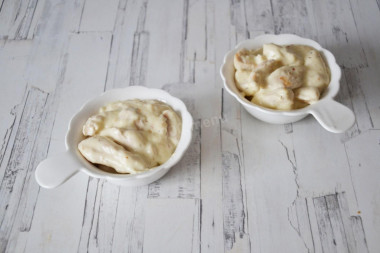
Spread the chicken fillet with cream sauce on the cocotnits.
Step 9:
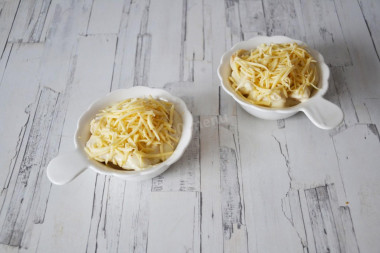
Sprinkle grated cheese on top. Bake julienne in a preheated 180 ° C oven for about 10 minutes until a golden crust appears on the surface of the cheese.
Step 10:
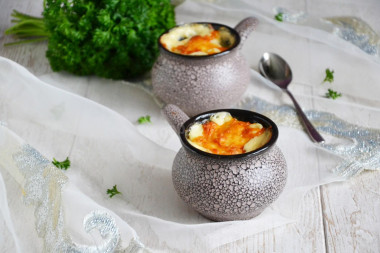
Serve the finished julienne immediately to the table while it is hot. Enjoy your meal!
Julienne is a special way of slicing young vegetables into thin strips, usually in the summer season for soups and salads, characteristic of French cuisine.
In modern cooking, this term refers to the cold processing (slicing) of vegetables intended for soups or sauces, which gives the most delicate consistency or accelerates the readiness of a dish of young vegetables or their shoots. In practice, this means that julienne is most often meant to be cut into strips (for root vegetables) and thin rings for onions and tomatoes.
Salads made up of such thinly sliced vegetables are therefore called juliennes, and the soup in which vegetables cut in this way are laid is called julienne soup.
In Russia, Julienne is a dish of mushrooms baked in sour cream or cream under a cheese crust (usually in a cocot). Juliennes from chicken meat and seafood are also in great demand.
Secrets, life hacks and all the most useful tips read in the article: "Cream and sour cream in cream sauce: what should I do so that they don't curl up?"
Keep in mind that everyone's ovens are different. The temperature and cooking time may differ from those specified in the recipe. To make any baked dish successful, use useful information about the features of ovens !
Important! An incorrectly selected frying pan can ruin even the best recipe. All the details on how to choose the perfect frying pan for different dishes read here .
Caloric content of the products possible in the composition of the dish
- Buttermilk - 36 kcal/100g
- Cream of 20% fat content - 300 kcal/100g
- Cream of 10% fat content - 120 kcal/100g
- Cream - 300 kcal/100g
- Dutch cheese - 352 kcal/100g
- Swiss cheese - 335 kcal/100g
- Russian cheese - 366 kcal/100g
- Kostroma cheese - 345 kcal/100g
- Yaroslavsky cheese - 361 kcal/100g
- Altai cheese 50% fat content - 356 kcal/100g
- Soviet cheese - 400 kcal/100g
- Cheese "steppe" - 362 kcal/100g
- Uglich cheese - 347 kcal/100g
- Poshekhonsky cheese - 350 kcal/100g
- Lambert cheese - 377 kcal/100g
- Appnzeller cheese with 50% fat content - 400 kcal/100g
- Chester cheese with 50% fat content - 363 kcal/100g
- Edamer cheese with 40% fat content - 340 kcal/100g
- Cheese with mushrooms of 50% fat content - 395 kcal/100g
- Emmental cheese with 45% fat content - 420 kcal/100g
- Gouda cheese with 45% fat content - 356 kcal/100g
- Aiadeus cheese - 364 kcal/100g
- Dom blanc cheese (semi-hard) - 360 kcal/100g
- Lo spalmino cheese - 61 kcal/100g
- Cheese "etorki" (sheep, hard) - 401 kcal/100g
- White cheese - 100 kcal/100g
- Fat yellow cheese - 260 kcal/100g
- Altai cheese - 355 kcal/100g
- Kaunas cheese - 355 kcal/100g
- Latvian cheese - 316 kcal/100g
- Limburger cheese - 327 kcal/100g
- Lithuanian cheese - 250 kcal/100g
- Lake cheese - 350 kcal/100g
- Gruyere cheese - 396 kcal/100g
- Ground black pepper - 255 kcal/100g
- Whole durum wheat flour fortified - 333 kcal/100g
- Whole durum wheat flour, universal - 364 kcal/100g
- Flour krupchatka - 348 kcal/100g
- Flour - 325 kcal/100g
- Butter 82% - 734 kcal/100g
- Amateur unsalted butter - 709 kcal/100g
- Unsalted peasant butter - 661 kcal/100g
- Peasant salted butter - 652 kcal/100g
- Melted butter - 869 kcal/100g
- Salt - 0 kcal/100g
- Spices dry - 240 kcal/100g
- Chicken breast (fillet) - 113 kcal/100g

